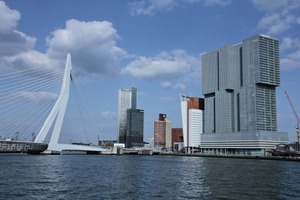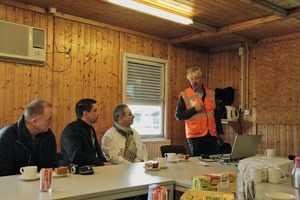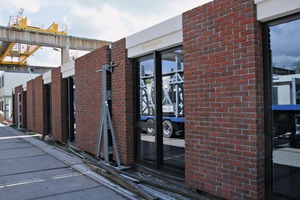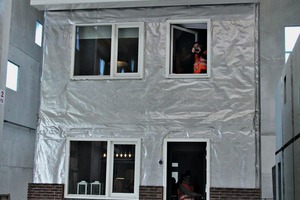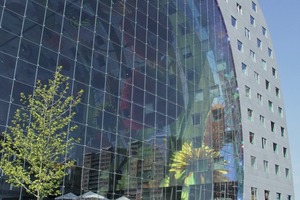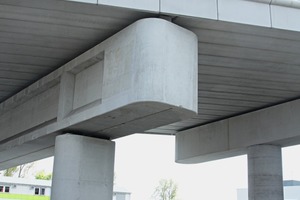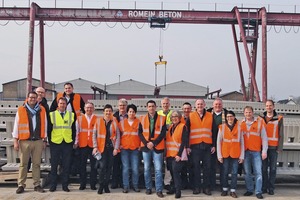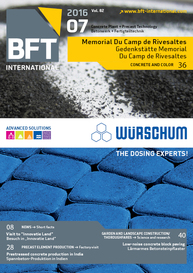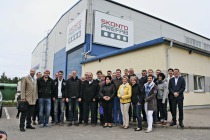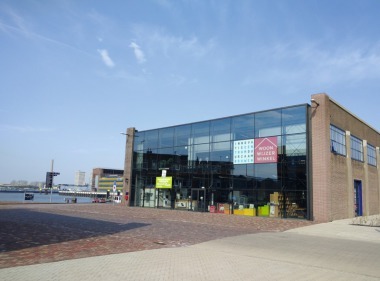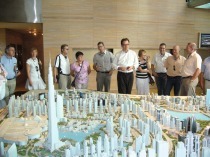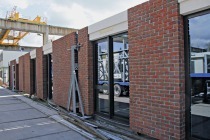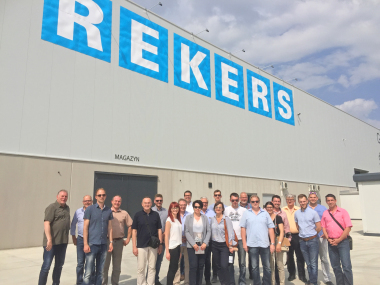Trip to “Innovatie Land”
In 2015, the Netherlands came in at an impressive 4th place in the Global Innovation Index ranking published by the World Intellectual Property Organization (WIPO), which is the organization that manages applications under the international Patent Cooperation Treaty. According to this ranking, the only countries considered to be even more innovative were Switzerland, the United Kingdom, and Sweden.
A group of about 20 representatives of German precast plants, industry associations and BFT International recently embarked on a journey to get a first-hand impression of the equally innovative Dutch precast construction sector. This study trip was jointly organized by the Berufsförderungswerk für die Beton- und Fertigteilhersteller (Vocational Training Association for Concrete and Precast Producers) headquartered in Ostfildern and Erleben! Reisen und Events, a travel agent based in Stuttgart.
Largest construction site in Europe
The first day was dedicated to visiting tourist attractions in Amsterdam. The group then traveled to the first highlight of this trip, a section of the currently largest construction site in Europe. As part of the scheme to extend and upgrade the transport infrastructure in the Greater Amsterdam area, the SAAone consortium including VolkerWessels, Boskalis, Hochtief, and DIF is currently enlarging an important traffic junction near Muiderberg and Muiden, where the A1 and A6 highways and a railway line intersect. Furthermore, the A6 crosses a tributary to the Ijsselmeer near Muiderberg. In this area, the above highways are being expanded to five lanes in each direction, complemented by an additional lane each intended for alternate use in either direction. The SAAone project also includes “Hollandse Brug”, a 300 m long and 30 m wide highway bridge completed in autumn 2015, as well as a 255 m long and 17 m wide railway bridge and the largest aqueduct in Europe that makes the A1 highway disappear underground near Muiden to enable unobstructed passage of big sailing ships to the Ijsselmeer.
The group then visited the Romein Beton production site at Dodewaard between Nijmegen and Arnhem. Romein Beton primarily produces precast elements for infrastructural proj-ects, including retaining walls, traffic guidance systems, noise barriers, tunnel segments and box culverts as well as custom elements. The company is a member of BTE Group, which is marketing its products and services along the entire chain from design to assembly both in the Netherlands and in the neighboring Germany. The group generates total revenues of 160 million euros; the German market accounts for a sizeable share of about 20 million euros. BTE is looking to strengthen its precast highway bridge offering in Germany, with a focus on the State of North Rhine-Westphalia.
High end and low cost
The headquarters of Hurks is located at Veldhoven, south-west of Eindhoven. This family-run business provides the complete range of services from design to construction of multi-story residential, office, and functional buildings. Hurks operates two precast plants in the Netherlands. Together with its international business, particularly with its subsidiary in the United Kingdom, the company generated revenues of 240 million euros in 2014.
Hurks specializes in architectural concrete. The company’s production sites rely on a mixture of highly automated reinforcement fabrication and manual work, for instance during insertion of facing bricks in steel molds for façade panels. From Veldhoven, Hurks is currently supplying brick-clad façade panels to the Royal Wharf project in London.
IQWoning, the next destination during the trip, is primarily serving the low-cost segment, which is a completely different market. This is why this company headquartered in Weert, about 30 km west of Roermond and the German-Dutch border, operates production facilities with a significantly higher degree of prefabrication. The newly constructed giant factory buildings are used to produce rectangular elements made from SCC (self-compacting concrete) just like on an assembly line. When joined together, three such profiles form a 5.4 m × 7.3 m module whose open front and rear are closed by wooden façade elements with integrated doors and windows. Together with a pitched roof, two of these modules put on top of one another create a simple house. In the Netherlands, such a completely finished, two-story single-family home comes at a minimum price of 89,900 euros.
Further trip destinations included the MVRDV architectural practice and the market hall designed by this office right in the center of Rotterdam, as well as the A-Lanes A15 public/private-partnership project to extend the A15 highway south of Rotterdam. Botleg Bridge, one of the prime engineering achievements in this project, has already been completed. This 92 m long and 50 m wide structure crosses the Oude Maas affluent. Ed. Züblin AG, the German contractor, was one of the parties involved in its construction.
The program was rounded off by visits to Amsterdam, Eindhoven, Rotterdam, Delft, and Noordwijk.
Text: Christian Jahn, M. A.

